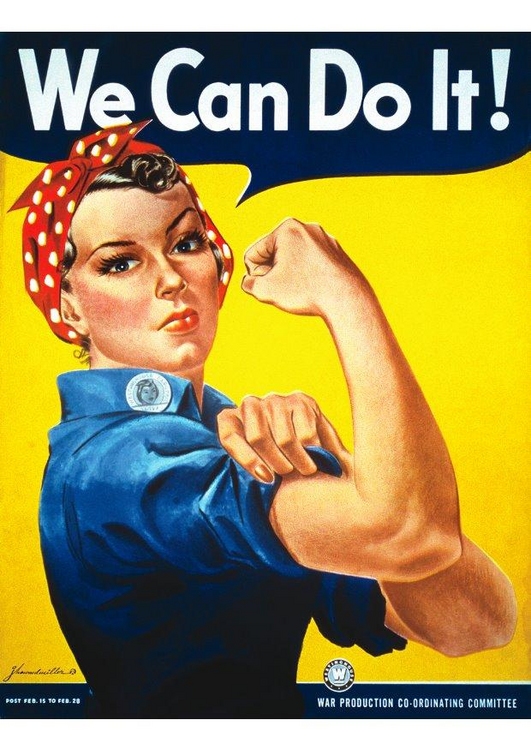When the US entered into World War II, the number of products produced in factories in America increased significantly. Lots of factories that had made cars before the war now made airplanes. Also, shipyards were required to grow larger so that they could make enough ships for America and their allies (England and France) to use all around the world. New factories were springing up all over North Carolina and the country needed workers to fill the positions in the factories. As lots of American men were leaving to join the military, the United States needed to get more people into the factories to work. The only people left to work were the women and some men who had not gone into the military. During World War II, African Americans were often segregated in restaurants, schools and work. However, when the government filled the factories with all of the available white women, they had to turn to African American women to finish the job.
Think About It: What kinds of jobs did women have during World War II?

In order to draw more women into the workforce, the government put up posters and displayed ads called propaganda to entice women to go into the industry. Rosie the Riveter became the new face of women in the workforce and was shown on a government poster, “We Can Do It!” which is shown to the right. Along with this poster, many advertisements were shown to draw women from their kitchens to the factory floors11.
The following sound bite is of a Women named Eunice Austin who worked in the factories during World War II. Her story is similar to many other women who worked on he factory floors during World War
II. Listen to get a glimpse of what life was like for this woman: clip2.wmv
Think About It: Why do you think women were not allowed to run the machines?
The following video is a government video asking women to come into the workforce. In this video the government is explaining to women that there is a shortage of workers in the workforce and that they need extra hands. They especially want young, unmarried women or women with older children who have already left home. If women who are married and have small children come into the workforce, the government assures them that their children will be cared for through government ran day cares.

(Video courtesy of U.S. government)
Think About It: What did women do with their children during the day while they were working?
The last video is a propaganda film asking women to leave the workforce after World War II. At this time men were coming home after the war wanting to return to their jobs that they had before the war. The government reminded the women of the promises that they made to return to the home after the war was won. The government wanted to make sure that all of the veterans who fought in the war had jobs when they returned because they didn't want to have unemployment problems.

(Video courtesy of U.S. government)
Think About It: How do you think these changes made their life different? More difficult or easier?
Comments (0)
You don't have permission to comment on this page.